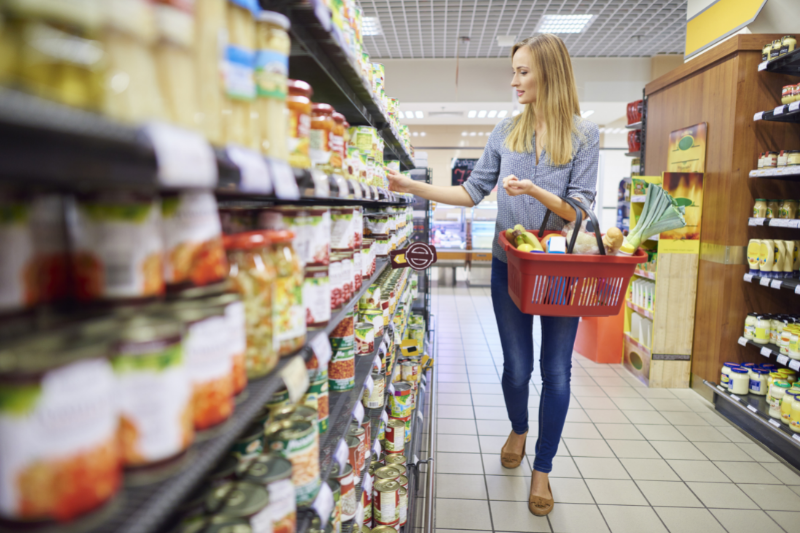
In the past, most retailers didn’t know their customers very well. Despite having regular customers, retailers focused on their products, supply chain, and getting items on the shelf. The hope was that by piling products high, people would buy them, without knowing their customers' exact needs.
Today, customer behavior analytics let retailers learn more about who’s shopping in their store and online. Personalization and a customer-centric outlook have become key to retail success, and 80% of companies have seen an uplift in sales after implementing personalization. For retailers, technology such as loyalty card schemes and payment tokens have made ‘knowing your customer’ possible.
Previously, medium or large retailers couldn’t achieve the level of customer personalization of small, individual stores.
Take your local farmer’s shop, for example. The shop owner can build a relationship with his regular customers, understand the average basket contents and size, and tailor the shopping experience to retain their patronage. These customers are more likely to return to the store.
Now, retailers with hundreds of stores can unlock this need to use their data and analyze customer behavior at scale to unlock the power of this personalization.
When you know what customers like, don’t like, and what they might like – you can target your marketing to them. This could be by providing relevant emails, coupon at till, or adjusting your marketing campaigns to be suitable for them.
When you tailor the customer experience to relevant products, it improves the buyer-seller relationship. Customers feel like you know them, which is proven to increase loyalty and spending. And shoppers feel rewarded for shopping at your store.
John Smith visits a retailer for the first time. He pays with cash. He hasn’t swiped a loyalty card. The only thing the retailer learns is what products he bought, his basket size, and transaction information (such as location or time.)
Customer behavior analytics can segment baskets, recognize what products John purchased, and understand how they are relevant. For example, if John purchased flour, butter, eggs, and sugar, you could provide a coupon at till for products from the baking category. This is beneficial because it’s more likely to be relevant to John’s buying behavior. This is better than no marketing at all or giving the same offer to every customer.
John Smith visits a retailer for the first time. He’s an unknown customer because he’s not engaged in a loyalty program. He pays with a debit card or credit card. The retailer can still learn more about John by using a payment token.
A payment token recognizes the card used by a customer in a transaction. Many shoppers will use the same card each time they visit a store, leaving a trail of data. As this is John’s first time visiting the store, the payment token is a proxy payment token. It can be used to provide marketing, such as coupon at till, that is as relevant as possible to John based on the basket he purchased today.
Retail loyalty card engagement has become tougher in recent years. Payment tokens have offset this loss by letting retailers analyze visits to their stores without the costs of running a loyalty scheme. This analysis is anonymized, but still lets retailers understand their performance. John isn’t identified, so cannot be contacted via personalized marketing channels. However, he is still able to receive coupons at till, which are delivered to him with his receipt (without identifying John). Importantly this follows GDPR legislation.
John Smith visits repeatedly. He is a known customer because he uses the same method of payment each time. He doesn’t sign up for a loyalty card scheme.
As John uses the same payment card each time he shops, the retailer can create a payment token and join his transactions over time, again without having the ability to identify him.
Using the token, the retailer can provide coupons at till to John (without knowing who he is), based on the contents of all of the baskets paid for by the same payment card. So, it can tailor marketing or offers to be even more relevant than they were before. For example, John purchases flour every time he visits. You can provide a coupon at till that gives him a discount on the same product next time, or a discount when he bulk buys it.
John Smith visits the same retail store for a year. A payment token has recognized him as a known customer, but last week, he signed up for a loyalty card scheme.
Customer behavior analytics can link John’s payment token data and his loyalty card data. This gives your retailer a much better picture of John, empowering you to personalize marketing communications immediately.
If he signs up to provide his email address and requests to receive his receipts electronically, then retailers can provide John with a digital receipt every time he shops. This can include content-rich emails with relevant information, for example marketing content about baking recipes. If he opts-in to receive marketing, he will receive offers in his digital receipts and ongoing marketing promotions.
The historical information from his 1:1 payment token can contribute too. For example, you could reward his spending, tailor discounts for products that he likes, or send marketing that could encourage him to increase his typical basket size. People are 40% more likely to spend more than they planned to when they identify their shopping experience as highly personalized. That’s why personalization is one of the greatest opportunities for retailers to maximize their profits.
Customer behavior analytics enable retailers to build better rapport with their customers. It can help you boost loyalty, drive more sales, and deliver more relevant offers.
However, behavior analytics can also inform operational strategies too. From what products to stock on your shelves to what promotions to run, behavior analytics can help retailers eliminate guesswork and make better decisions.